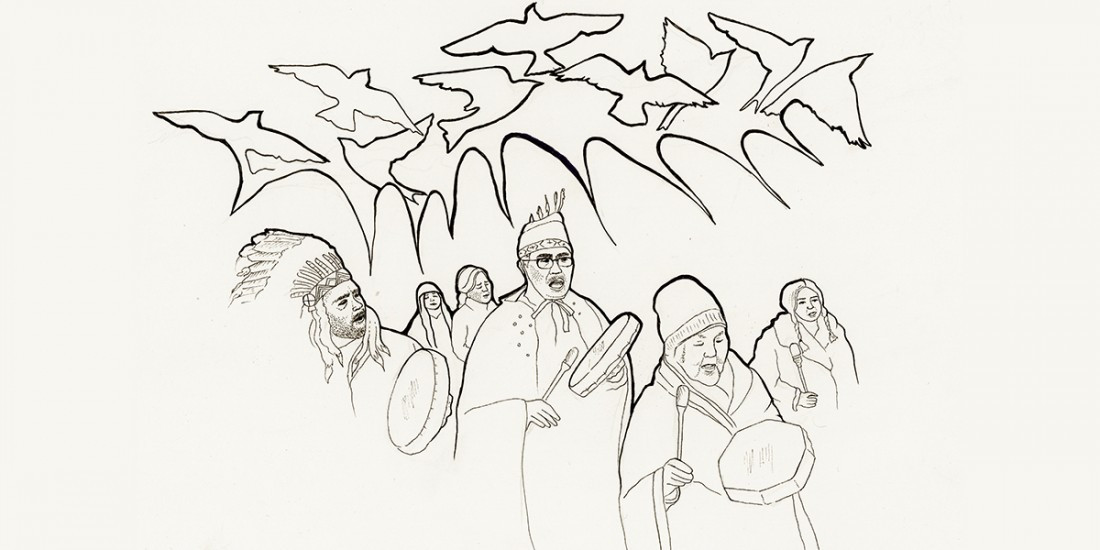Media skewing Wet’suwet’en
Supporting Wet’suwet’en from Manitoba
“Wet’suwet’en, what do you think about the protesting?” I was asked, the only Indigenous person at a Leap Year fire.
I have been an Indigenous activist for most of my life, advocating for causes from freeing Leonard Peltier, raising awareness about the impact of hydro dams in Manitoba, to the present-day Wet’suwet’en disputes.
One of the teachings I was given is that, as the original people to this country, we must continue to assert our responsibility to the land and our culture to ensure that both are there for the next generations. Not all Indigenous people believe in this teaching, but those who know it understand that protecting – not protesting – is a huge responsibility.
When I was asked the question at the fire, I said: “I don’t speak for all Indigenous people, but I believe that the Wet’suwet’en people are letting settler Canadians know that they are protesting for the land and especially water.”
Other settler allies at the fire lent their voices and thoughts to the person asking the question. As I sat and watched the interaction, I wondered if mainstream media would ever be able to sit and actually listen and talk with integrity with Indigenous peoples who have a worldview that is not based on capitalism.
Instead, popular media continues to focus on the barricades, the “violence” of peaceful rallies and, recently, on the graffiti that has appeared on a number of Winnipeg buildings, including the RCMP headquarters and the Canadian Museum for Human Rights.
These media portrayals continue to propagate the gaze that sees Indigenous people as violent. In the case of the recent graffiti, it’s unknown who disrespected the memorials. It could have been non-Indigenous people wanting to create more animosity. Who knows?
I wonder why mainstream media will not focus on the idea that no government should ever have thought that the Coastal GasLink pipeline could overrun any Indigenous territory without being challenged.
These are things I thought about after coming home from the fire. I reflected on how my voice was not only heard, but how the allies I was speaking with made it their responsibility to understand what Wet’suwet’en is about.
After the fire, someone wrote to me and said they wished they had uttered “standing with Wet’suwet’en is standing with protectors of the rule of LAW: land, air, water.”
Settler Canadians who do not question what they are reading or hearing in the media may take in the information it poses as if it is the only truth.
Many people do not even question why pipelines have to go through Indigenous peoples’ territories. If the pipelines went through non-Indigenous territories, then there would almost definitely be more negotiations with provincial, city and rural governments.
But these kinds of negotiations mean more time and money. It is quicker and cheaper to go through Indigenous peoples’ lands, because it does mean less bureaucratic entities with which to “negotiate” land usage.
I also wonder if Ottawa thought about their agreements of reconciliation as they spoke of pipelines? I often wonder if people, in general, take the time to understand how capitalism, the main form of colonialism, has shaped this country of Canada to the detriment of Indigenous peoples values, beliefs and culture.
Moneca Sinclaire is Omaškêkowak (Swampy Cree), originally from Northern Manitoba. She is an independent scholar and visual artist whose works bring people into a layered world of self-determining creativity. As an independent scholar, Moneca has presented and lectured at many conferences/universities across Canada using Omaškêkowak intellectual practices.
Published in Volume 74, Number 21 of The Uniter (March 12, 2020)







